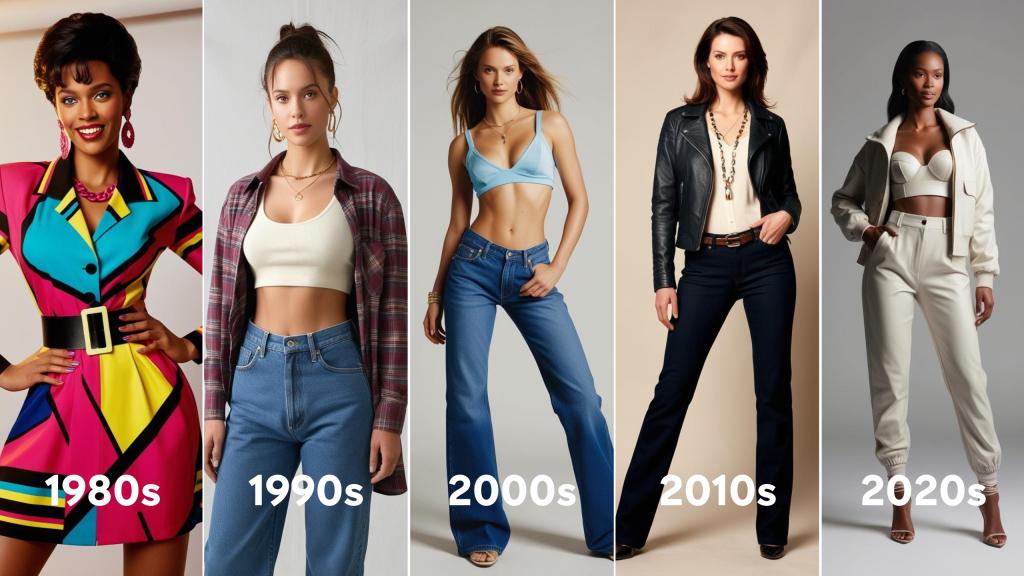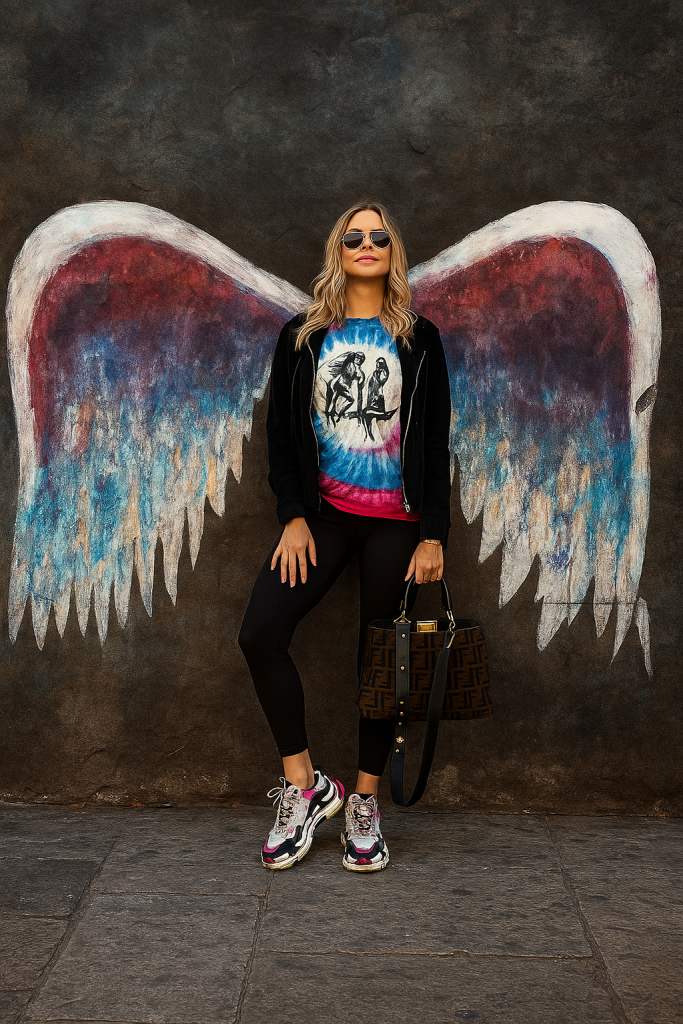How Fashion Icons of the Past Influence
How Fashion Icons of the Past Influence Today’s Designers
Fashion is a language that constantly evolves, yet it never forgets its roots. The silhouettes, colors, and statement pieces we see on today’s runways often carry whispers of inspiration from fashion icons who left their mark decades ago. From Audrey Hepburn’s timeless elegance to David Bowie’s bold rebellion, these legendary figures continue to influence modern designers, proving that style is both cyclical and ever-evolving.
In this article, we’ll explore how fashion icons influence today’s design world, the balance between old vs new style inspiration, and why these connections ensure that fashion remains a timeless art form.
Why Fashion Icons Still Matter in 2025
In an age of fast fashion and digital-first trends, one might assume that modern designers are only chasing viral moments. However, the truth is quite the opposite. Many brands look backward to move forward. Whether it’s revisiting 90s minimalism, 70s bohemian freedom, or 50s Hollywood glamour, fashion houses reinterpret these aesthetics for today’s consumer.
Fashion icons symbolize more than clothes—they embody a lifestyle, attitude, and cultural shift. That’s why they remain relevant even decades later.
- Audrey Hepburn → Timeless little black dress inspiration.
- Princess Diana → Streetwear and off-duty royal chic.
- Coco Chanel → Structured elegance and minimalism.
- David Bowie → Gender-fluid fashion in 2025.
- Naomi Campbell → Runway power dressing and inclusivity.
Designers in 2025 blend these influences with AI-driven personalization and sustainable fabrics, creating a bridge between heritage and innovation.
Old vs New Style Inspiration: The Fashion Timeline
To understand old vs new style inspiration, let’s break it down by decades:

1950s – The Era of Elegance
Fashion icons like Grace Kelly and Marilyn Monroe set the tone for femininity and glamour. Designers today revisit this era with:
- Cinched waists and full skirts (revived in Dior collections).
- Red lipstick and pearls are reappearing as timeless accessories.
1970s – Freedom and Rebellion
From Cher’s bold disco looks to Jane Birkin’s effortless bohemian charm, the 70s were about self-expression. Today’s designers adapt this by:
- Bringing back flared pants and chunky platforms.
- Using earthy tones and sustainable fabrics.
1990s – Minimalism and Streetwear
Icons like Kate Moss, Naomi Campbell, and Tupac Shakur pushed fashion into a minimal yet bold era. Their influence continues with:
- Slip dresses dominating both high fashion and streetwear.
- Oversized denim and hoodies resurfacing with Gen Z.
2010s – Digital Icons
While classic icons remain important, newer figures like Rihanna, Harry Styles, and Zendaya mix tradition with modern edge. Designers follow their lead by:
- Blurring gender boundaries.
- Merging luxury with streetwear.
How Modern Designers Pay Tribute
Today’s top designers don’t simply copy the past—they reinvent it. For example:
- Virgil Abloh (Off-White) blended street culture with Chanel-inspired tailoring.
- Gucci often reinterprets 70s and 80s nostalgia with bold colors.
- Dior pays homage to the 50s “New Look” but updates it with futuristic fabrics.
- Balmain channels the power-dressing energy of the ’80s but adds modern cuts.
This fusion of heritage and futurism ensures that fashion remains relevant across generations.
Fashion Icons and Their Impact on Everyday Style
It’s not just luxury brands—everyday fashion also mirrors the influence of icons. Online stores, thrift markets, and even fitness fashion (check out ComfyFit for modern athleisure inspiration) borrow heavily from past aesthetics to create affordable, wearable looks.
For example:
- The oversized blazers we see on Instagram influencers come from the ’80s corporate chic movement.
- The rise of chunky sneakers is a tribute t’90s0s sports culture.
- Corset tops and bustiers reference Victorian style, reimagined for today.
Why Nostalgia Works in Fashion
Nostalgia is more than just sentiment—it’s a proven marketing tool. When people wear pieces inspired by past fashion icons, they tap into:
- Identity: Dressing like their favorite icons creates a personal connection.
- Timelessness: Vintage-inspired outfits feel evergreen.
- Confidence: Iconic looks carry a sense of power and self-expression.
Designers use nostalgia to balance innovation with familiarity, making their collections resonate globally.
The Role of Pop Culture in Iconic Influence
Movies, music, and pop culture amplify the legacy of fashion icons. Consider these examples:
- Breakfast at Tiffany’s → Audrey Hepburn’s little black dress remains a bestseller.
- Sex and the City → Carrie Bradshaw made Manolo Blahniks legendary.
- Elvis Presley → His flamboyant jumpsuits inspire stage costumes today.
- Madonna in the 80s → Sparked the rise of edgy street-style layering.
In 2025, platforms like TikTok and Instagram accelerate this influence, allowing retro trends to go viral overnight.
Sustainability: Reworking the Past for the Future
With fashion facing pressure to become eco-friendly, old styles aren’t just inspirational—they’re sustainable. Vintage fashion, thrifting, and upcycling are mainstream in 2025.
Designers take cues from past icons while reimagining their looks with:
- Organic fabrics instead of synthetics.
- Circular fashion practices (repair, recycle, resell).
- Tech-driven fabrics that merge retro silhouettes with comfort.
This ensures that fashion icons influence not only style but also the future of sustainability.

Fashion Icons Who Define 2025
While past icons inspire, today’s stars are also becoming tomorrow’s legends. Some key figures shaping 2025 include:
- Zendaya → Modern glamour with old Hollywood nods.
- Timothée Chalamet → Redefining menswear with gender-neutral choices.
- Rihanna → Mixing high fashion, streetwear, and inclusivity.
- Harry Styles → Reviving Bowie’s gender-fluid influence.
These personalities prove the cycle: today’s style setters become tomorrow’s fashion icons.
Conclusion: Timeless Inspiration in a Modern World
Fashion is a dialogue between the past and the present. Old vs new style inspiration shows us that even in 2025, designers rely on the timeless energy of iconic figures while blending it with digital innovation and sustainable practices.
From Audrey Hepburn’s elegance to Rihanna’s fearless modernity, the fashion icons’ influence will always remain a guiding force. Whether on runways, in streetwear, or in fitness fashion like ComfyFit, the connection between heritage and modern style keeps fashion alive, relevant, and endlessly inspiring.
